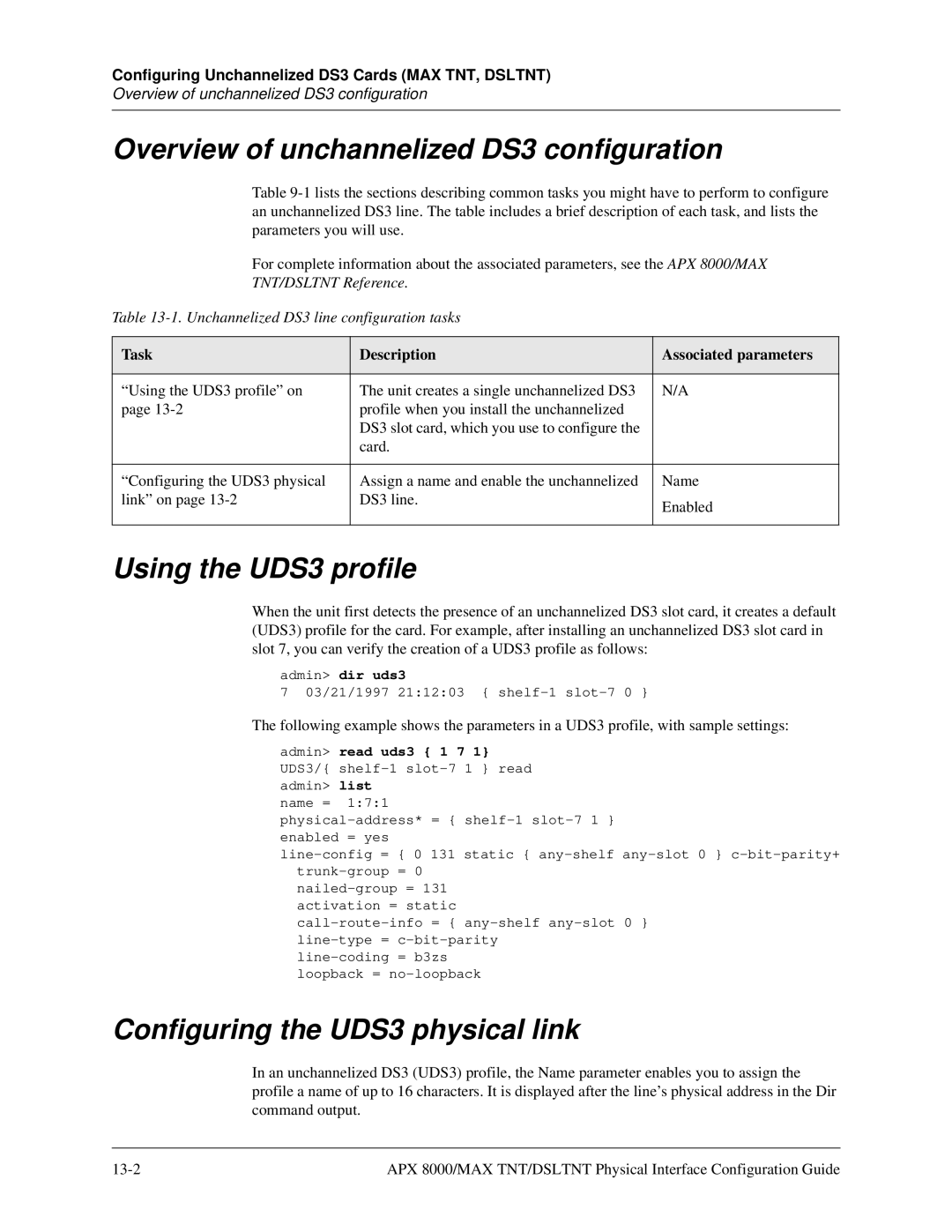
Configuring Unchannelized DS3 Cards (MAX TNT, DSLTNT)
Overview of unchannelized DS3 configuration
Overview of unchannelized DS3 configuration
Table
For complete information about the associated parameters, see the APX 8000/MAX
TNT/DSLTNT Reference.
Table
Task | Description | Associated parameters |
|
|
|
“Using the UDS3 profile” on | The unit creates a single unchannelized DS3 | N/A |
page | profile when you install the unchannelized |
|
| DS3 slot card, which you use to configure the |
|
| card. |
|
|
|
|
“Configuring the UDS3 physical | Assign a name and enable the unchannelized | Name |
link” on page | DS3 line. | Enabled |
|
| |
|
|
|
Using the UDS3 profile
When the unit first detects the presence of an unchannelized DS3 slot card, it creates a default (UDS3) profile for the card. For example, after installing an unchannelized DS3 slot card in slot 7, you can verify the creation of a UDS3 profile as follows:
admin> dir uds3
7 03/21/1997 21:12:03 {
The following example shows the parameters in a UDS3 profile, with sample settings:
admin> read uds3 { 1 7 1} UDS3/{ shelf-1 slot-7 1 } read admin> list
name = 1:7:1
Configuring the UDS3 physical link
In an unchannelized DS3 (UDS3) profile, the Name parameter enables you to assign the profile a name of up to 16 characters. It is displayed after the line’s physical address in the Dir command output.
APX 8000/MAX TNT/DSLTNT Physical Interface Configuration Guide |
